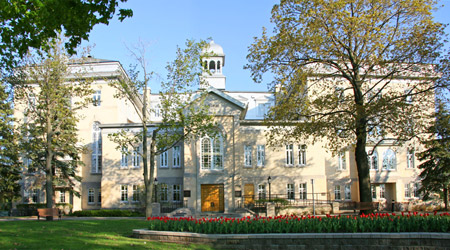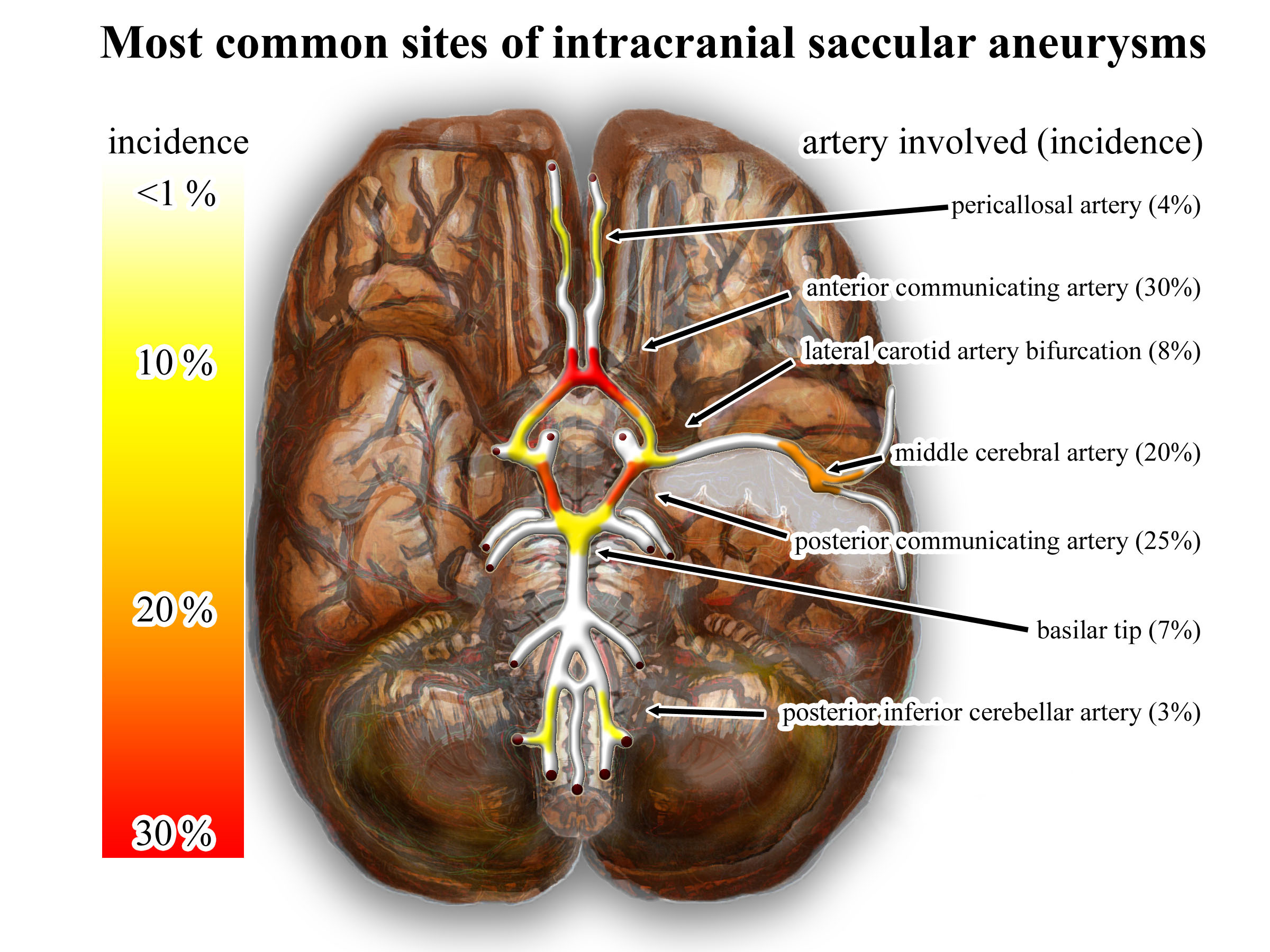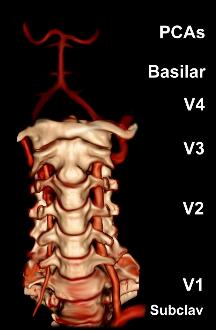|
C. Miller Fisher
Charles Miller Fisher (December 5, 1913, Waterloo, Ontario – April 14, 2012, Albany, New York) was a Canadian neurologist whose notable contributions include the first detailed descriptions of lacunar strokes, the identification of transient ischemic attacks as stroke precursors, the identification of the link between carotid atherosclerosis and stroke, and the description of a variant form of Guillain–Barré syndrome which bears his name. Education and career Fisher received a B.A. from Victoria University in Toronto in 1935. He then attended the University of Toronto Medical School, where he received his M.D. in 1938. He continued training at Henry Ford Hospital in Detroit and Royal Victoria Hospital in Montreal. During World War II, Fisher served as a surgical lieutenant in the Royal Canadian Navy, and was aboard HMS ''Voltaire'' when it was sunk by German gunfire in 1941 off the coast of Cape Verde. Fisher was captured and spent 3.5 years in a German prison camp, un ... [...More Info...] [...Related Items...] OR: [Wikipedia] [Google] [Baidu] |
Charles Miller Fisher
Charles Miller Fisher (December 5, 1913, Waterloo, Ontario – April 14, 2012, Albany, New York) was a Canadian neurologist whose notable contributions include the first detailed descriptions of lacunar strokes, the identification of transient ischemic attacks as stroke precursors, the identification of the link between carotid atherosclerosis and stroke, and the description of a variant form of Guillain–Barré syndrome which bears his name. Education and career Fisher received a B.A. from Victoria University in Toronto in 1935. He then attended the University of Toronto Medical School, where he received his M.D. in 1938. He continued training at Henry Ford Hospital in Detroit and Royal Victoria Hospital in Montreal. During World War II, Fisher served as a surgical lieutenant in the Royal Canadian Navy, and was aboard HMS ''Voltaire'' when it was sunk by German gunfire in 1941 off the coast of Cape Verde. Fisher was captured and spent 3.5 years in a German prison camp, u ... [...More Info...] [...Related Items...] OR: [Wikipedia] [Google] [Baidu] |
Transient Ischemic Attack
A transient ischemic attack (TIA), commonly known as a mini-stroke, is a minor stroke whose noticeable symptoms usually end in less than an hour. TIA causes the same Symptoms of stroke, symptoms associated with strokes, such as weakness or numbness on one side of the body, sudden dimming or loss of vision, difficulty speaking or understanding language, dysarthria, slurred speech, or altered mental status, confusion. All forms of stroke, including TIA, result from a disruption in blood flow to the central nervous system. A TIA is caused by a temporary disruption in cerebral blood flow, blood flow to the brain, or cerebral blood flow (CBF). The primary difference between a major stroke and the TIA's minor stroke is how much tissue death (infarction) can be detected afterwards through medical imaging. While a TIA must by definition be associated with symptoms, strokes can also be symptomatic or silent. In silent stroke, also known as ''silent cerebral infarct'' (SCI), there is per ... [...More Info...] [...Related Items...] OR: [Wikipedia] [Google] [Baidu] |
Canadian Expatriates In The United States
Canadians (french: Canadiens) are people identified with the country of Canada. This connection may be residential, legal, historical or cultural. For most Canadians, many (or all) of these connections exist and are collectively the source of their being ''Canadian''. Canada is a multilingual and multicultural society home to people of groups of many different ethnic, religious, and national origins, with the majority of the population made up of Old World immigrants and their descendants. Following the initial period of French and then the much larger British colonization, different waves (or peaks) of immigration and settlement of non-indigenous peoples took place over the course of nearly two centuries and continue today. Elements of Indigenous, French, British, and more recent immigrant customs, languages, and religions have combined to form the culture of Canada, and thus a Canadian identity. Canada has also been strongly influenced by its linguistic, geographic, and e ... [...More Info...] [...Related Items...] OR: [Wikipedia] [Google] [Baidu] |
Canadian Medical Hall Of Fame
__NOTOC__ The Canadian Medical Hall of Fame is a Canadian charitable organization, founded in 1994, that honours Canadians who have contributed to the understanding of disease and improving the health of people. It has an exhibit hall in London, Ontario London (pronounced ) is a city in southwestern Ontario, Canada, along the Quebec City–Windsor Corridor. The city had a population of 422,324 according to the 2021 Canadian census. London is at the confluence of the Thames River, approximate ..., an annual induction ceremony, career exploration programs for youth and a virtual hall of fame. Laureates References * External links Official site {{Authority control 1994 establishments in Ontario Health charities in Canada Halls of fame in Canada Organizations based in London, Ontario Museums established in 1994 Companies based in London, Ontario Museums in London, Ontario Medical museums in Canada Science and technology halls of fame ... [...More Info...] [...Related Items...] OR: [Wikipedia] [Google] [Baidu] |
Royal College Of Physicians And Surgeons Of Canada
The Royal College of Physicians and Surgeons of Canada (french: Collège royal des médecins et chirurgiens du Canada) is a regulatory college which acts as a national, nonprofit organization established in 1929 by a special Act of Parliament to oversee the medical education of specialists in Canada. The Royal College is an association of physicians concerned with setting national standards for medical education and continuing professional development in Canada for 80 medical specialties. As such, the Royal College is neither a licensing nor a disciplinary body. Instead, it is a regulatory authority that helps ensure that the training and evaluation of medical and surgical specialists and two special programs maintain certain standards of quality. All specialists in Canada, with the exception of family physicians, must be certified by the Royal College before they obtain a provincial or territorial licence to practise. The only exception is in the province of Quebec, where the R ... [...More Info...] [...Related Items...] OR: [Wikipedia] [Google] [Baidu] |
Normal Pressure Hydrocephalus
Normal-pressure hydrocephalus (NPH), also called malresorptive hydrocephalus, is a form of communicating hydrocephalus in which excess cerebrospinal fluid (CSF) occurs in the ventricles, and with normal or slightly elevated cerebrospinal fluid pressure. As the fluid builds up, it causes the ventricles to enlarge and the pressure inside the head to increase, compressing surrounding brain tissue and leading to neurological complications. The disease presents in a classic triad of symptoms, which are memory impairment, urinary frequency, and balance problems/ gait deviations (note: this diagnosis method is obsolete). The disease was first described by Salomón Hakim and Adams in 1965. The treatment is surgical placement of a ventriculoperitoneal shunt to drain excess CSF into the lining of the abdomen where the CSF will eventually be absorbed. NPH is often misdiagnosed as other conditions including Meniere's disease due to balance problems, Parkinson's disease (due to gait) or Al ... [...More Info...] [...Related Items...] OR: [Wikipedia] [Google] [Baidu] |
CSF Tap Test
The CSF tap test, sometimes lumbar tap test or Miller Fisher Test, is a medical test that is used to decide whether shunting of cerebrospinal fluid (CSF) would be helpful in a patient with suspected normal pressure hydrocephalus (NPH). The test involves removing 30-50 ml of cerebrospinal fluid (CSF) through a lumbar puncture, after which motor and cognitive function is clinically reassessed. The name "Fisher test" is after C. Miller Fisher Charles Miller Fisher (December 5, 1913, Waterloo, Ontario – April 14, 2012, Albany, New York) was a Canadian neurologist whose notable contributions include the first detailed descriptions of lacunar strokes, the identification of transient ..., a Canadian neurologist working in Boston, Massachusetts, who described the test. Clinical improvement showed a high predictive value for subsequent success with shunting. A "negative" test has a very low predictive accuracy, as many patients may improve after a shunt in spite of lack of improveme ... [...More Info...] [...Related Items...] OR: [Wikipedia] [Google] [Baidu] |
Cerebral Aneurysm
An intracranial aneurysm, also known as a brain aneurysm, is a cerebrovascular disorder in which weakness in the wall of a cerebral artery or vein causes a localized dilation or ballooning of the blood vessel. Aneurysms in the posterior circulation (basilar artery, vertebral arteries and posterior communicating artery) have a higher risk of rupture. Basilar artery aneurysms represent only 3–5% of all intracranial aneurysms but are the most common aneurysms in the posterior circulation. Classification Cerebral aneurysms are classified both by size and shape. Small aneurysms have a diameter of less than 15 mm. Larger aneurysms include those classified as large (15 to 25 mm), giant (25 to 50 mm), and super-giant (over 50 mm). Berry (saccular) aneurysms Saccular aneurysms, also known as berry aneurysms, appear as a round outpouching and are the most common form of cerebral aneurysm. Causes include connective tissue disorders, polycystic kidney disease, art ... [...More Info...] [...Related Items...] OR: [Wikipedia] [Google] [Baidu] |
Subarachnoid Hemorrhage
Subarachnoid hemorrhage (SAH) is bleeding into the subarachnoid space—the area between the arachnoid membrane and the pia mater surrounding the brain. Symptoms may include a severe headache of rapid onset, vomiting, decreased level of consciousness, fever, and sometimes seizures. Neck stiffness or neck pain are also relatively common. In about a quarter of people a small bleed with resolving symptoms occurs within a month of a larger bleed. SAH may occur as a result of a head injury or spontaneously, usually from a ruptured cerebral aneurysm. Risk factors for spontaneous cases include high blood pressure, smoking, family history, alcoholism, and cocaine use. Generally, the diagnosis can be determined by a CT scan of the head if done within six hours of symptom onset. Occasionally, a lumbar puncture is also required. After confirmation further tests are usually performed to determine the underlying cause. Treatment is by prompt neurosurgery or endovascular coiling. Medicat ... [...More Info...] [...Related Items...] OR: [Wikipedia] [Google] [Baidu] |
Vertebral Artery Dissection
Vertebral artery dissection (VAD) is a flap-like tear of the inner lining of the vertebral artery, which is located in the neck and supplies blood to the brain. After the tear, blood enters the arterial wall and forms a blood clot, thickening the artery wall and often impeding blood flow. The symptoms of vertebral artery dissection include head and neck pain and intermittent or permanent stroke symptoms such as difficulty speaking, impaired coordination and visual loss. It is usually diagnosed with a contrast-enhanced CT or MRI scan. Vertebral dissection may occur after physical trauma to the neck, such as a blunt injury (e.g. traffic collision), or strangulation, or after sudden neck movements, i.e. coughing, but may also happen spontaneously. 1–4% of spontaneous cases have a clear underlying connective tissue disorder affecting the blood vessels. Treatment is usually with either antiplatelet drugs such as aspirin or with anticoagulants such as heparin or warfarin. Verte ... [...More Info...] [...Related Items...] OR: [Wikipedia] [Google] [Baidu] |
Carotid Artery Dissection
Carotid artery dissection is a separation of the layers of the artery wall supplying oxygen-bearing blood to the head and brain and is the most common cause of stroke in young adults. ( Dissection is a blister-like de-lamination between the outer and inner walls of a blood vessel, generally originating with a partial leak in the inner lining.) Dissection may occur after physical trauma to the neck, such as a blunt injury (e.g. traffic collision), strangulation, but may also happen spontaneously. Signs and symptoms The signs and symptoms of carotid artery dissection may be divided into ischemic and non-ischemic categories: Non-ischemic signs and symptoms: * Localised headache, particularly around one of the eyes * Neck pain * Swollen tongue * Decreased pupil size with drooping of the upper eyelid ( Horner syndrome) * Pulsatile tinnitus Ischemic signs and symptoms: * Temporary vision loss * Ischemic stroke Causes Dissection in ultrasound The causes of internal caroti ... [...More Info...] [...Related Items...] OR: [Wikipedia] [Google] [Baidu] |
Cervical Artery Dissection (other)
Cervical artery dissection is dissection of one of the layers that compose the carotid and vertebral artery in the neck (cervix). They include: * Carotid artery dissection, a separation of the layers of the artery wall supplying oxygen-bearing blood to the head and brain. * Vertebral artery dissection, a flap-like tear of the inner lining of the vertebral artery that supply blood to the brain and spinal cord. Cervical dissections can be broadly classified as either "spontaneous" or traumatic. Cervical artery dissections are a significant cause of strokes in young adults. A dissection typically results in a tear in one of the layers of the arterial wall. The result of this tear is often an intramural hematoma and/or aneurysmal dilation in the arteries leading to the intracranial area. Signs and symptoms of a cervical artery dissection are often non-specific and can be localized or generalized. There is no specific treatment, although most patients are either given an anti-platelet o ... [...More Info...] [...Related Items...] OR: [Wikipedia] [Google] [Baidu] |




